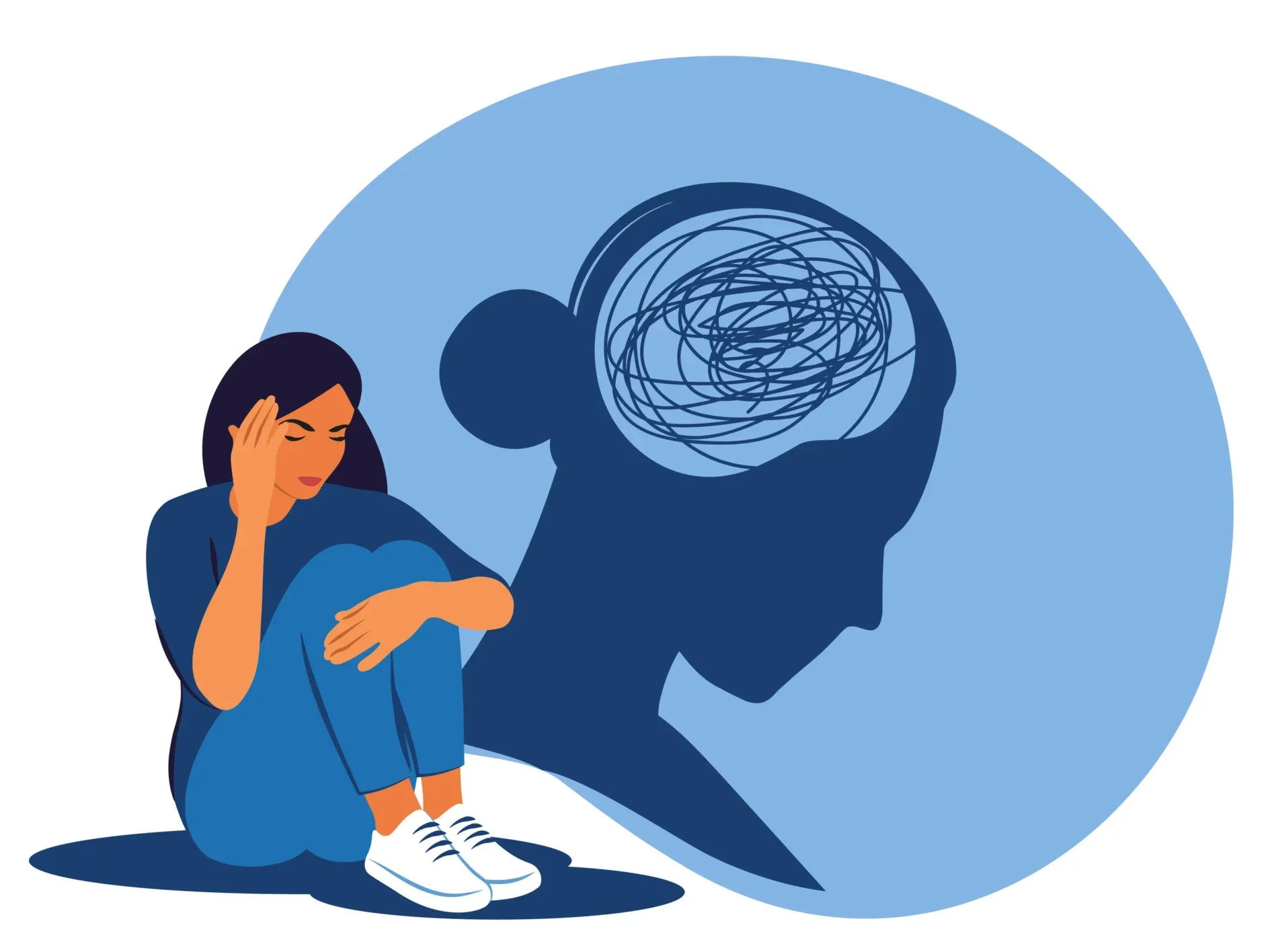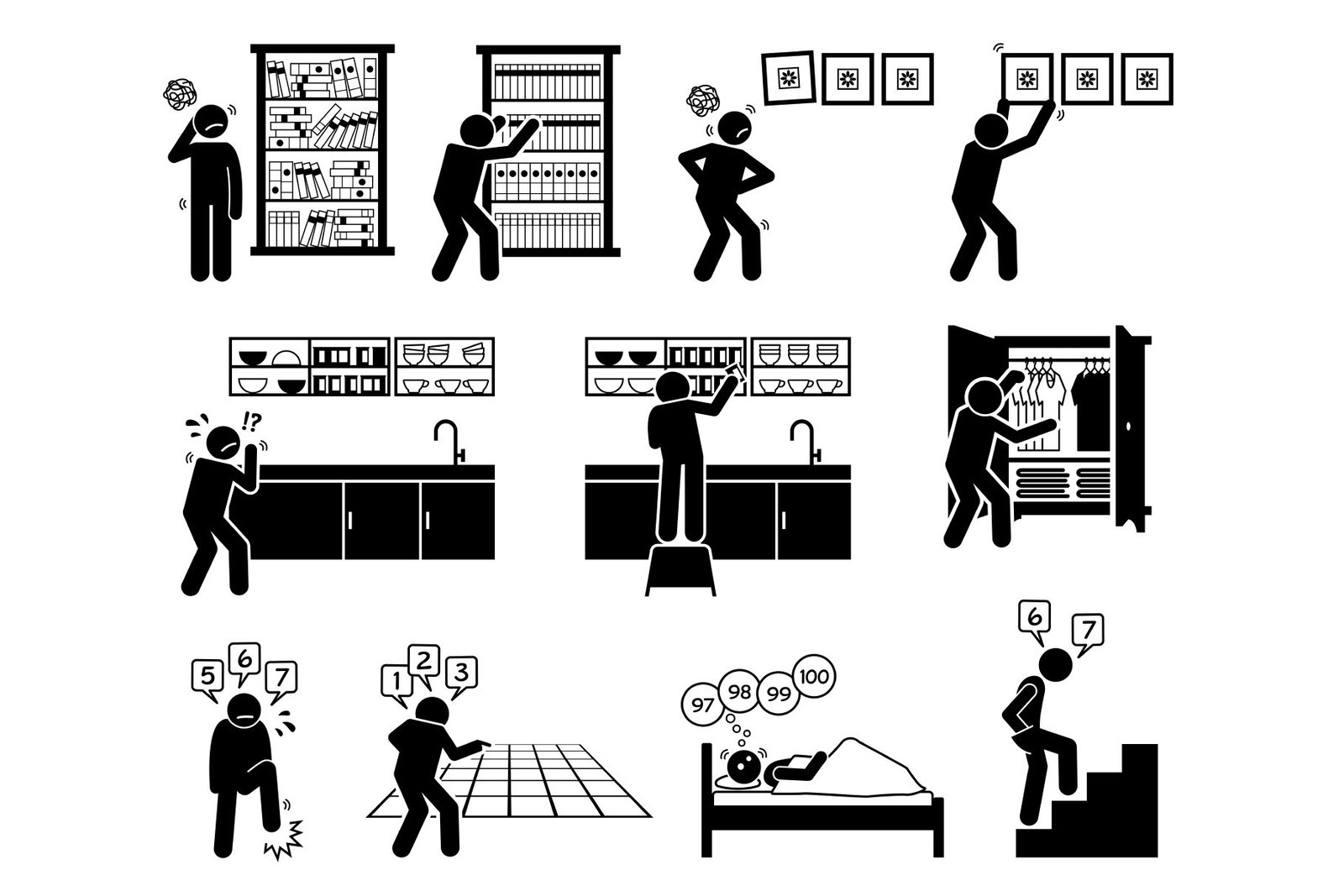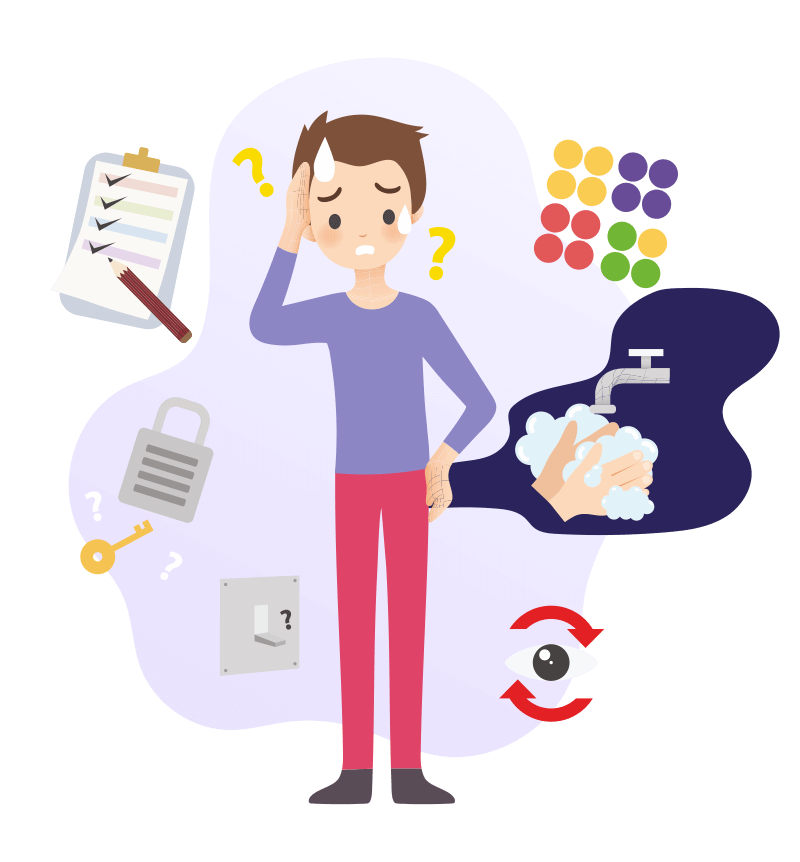Do You Know What OCD Really Is?
OCD stands for Obsessive-Compulsive Disorder, and it’s a mental health condition that traps a person in a repetitive cycle. Let’s break down how this cycle works.
It all starts with an obsession—which means an unwanted, intrusive thought, image, or urge that pops into the mind without warning. These thoughts are often disturbing and hard to ignore.
This obsession creates intense anxiety or emotional distress. For example, someone might start worrying excessively about getting sick, even when there’s no real danger.

To relieve this anxiety, the person feels compelled to take some action—this is called a compulsion. It could be anything from washing hands repeatedly to checking things over and over. These behaviors are done not because the person wants to, but because they feel they have to in order to calm their anxiety.
The problem? The relief is only temporary. Soon another obsessive thought arises, followed by more anxiety, and the need to perform another compulsion. And so, the cycle continues—obsession, anxiety, compulsion, brief relief… and then it starts all over again.
What’s even more painful is that most people with OCD are aware that their thoughts and behaviors don’t make sense, but they still feel powerless to stop them.
Normal Thoughts vs. OCD: What’s the Difference?
We all experience random or negative thoughts from time to time—like wondering if our hands are dirty. That’s completely normal. But in the case of OCD (Obsessive-Compulsive Disorder), these thoughts don’t just pass by—they take over.
For someone with OCD, the thought “my hands are dirty” becomes so intense and overwhelming that it drowns out all other thoughts. In that moment, nothing else matters. They may feel an urgent, uncontrollable need to wash their hands—immediately.

Even if they’re at a social gathering, meeting someone new, or attending a formal dinner, the compulsion to wash their hands takes priority. They’re often aware that their behavior might seem unusual or even attract attention, but the anxiety is so strong that they feel they must act on it just to feel a moment of relief.
This is what sets OCD apart from normal worries. It’s not just the thought itself—it’s the intensity, urgency, and inability to ignore or resist that makes it a disorder.
OBSESSION: THE STATE IN WHICH YOU CAN ONLY THINK ABOUT ONE PERSON OR THING SO THAT YOU CANNOT THINK OF ANYTHING ELSE
Common Types of OCD
OCD shows up in many ways. Here are some of the most common forms:
1. Contamination & Cleaning Obsession
People with this form constantly fear germs, dirt, or getting sick. They might feel the need to wash their hands, clean their room, or sanitize surfaces repeatedly—even when there’s no real danger.

2. Symmetry & Order Obsession
This involves an extreme need for things to be perfectly aligned or arranged.

For example, pencils must be placed in a straight line, or boxes in a cupboard must face the same direction. Even a slight change can cause distress.
If somebody even touches the pencil in their room, they come to know that they and get distressed thinking something is wrong.
If they have kept boxes in their cupboard, the printed side of the boxes will be completely front facing. And all of them will be placed in the same height and same alignment from front and back.
If somebody even touches their room, they come to know immediately and they start getting distressed.
3. Checking Compulsion
One more common obsessive thought is that due to our actions our near and dear ones or we ourselves will be harmed.

These individuals are plagued by doubts—did I lock the door? Did I turn off the stove? The fear that a mistake could lead to harm makes them check things again and again, often several times in a row.
4. Intrusive Thoughts & Rumination
Some people experience disturbing thoughts, like harming their children or being responsible for harm to loved ones. These thoughts are unwanted, yet they come back repeatedly, causing immense guilt and anxiety.

They repeatedly suffer from this thing that my children will be harmed due to my reason
Common Compulsive Behaviors
To reduce the anxiety caused by obsessive thoughts, people with OCD perform certain repetitive actions:

-
Washing hands excessively
-
Cleaning rooms or furniture obsessively
-
Rearranging items to be perfectly aligned
-
Seeking reassurance from others (“Are my hands clean? Did I lock the door?”)
-
Mentally talking to themselves to calm down or push away unwanted thoughts
Often, they know their behavior is irrational—but they still feel compelled to do it.
Their colleagues or office workers tell them that perhaps you are having some trouble, you are too well organized, if anybody touches or shakes anything of yours, you get angry.
Apart from this people get so troubled that they come to know about our behavior in which we repeatedly have an obsession about something and we do it right.
This is totally irrelevant, nothing happens because of this and other people do not have such behavior.
Still they are unable to overcome it. Because this irrational thought comes to him again, then the same cycle starts again, then emotions and compulsions… he remains caught in it.
He gets so worried that he has to take re-insurance from his roommates many times, did I lock my room, I am clean with my hands, I did switch off the gas stove, my room is clean, will this cause me any worry?
He tries again and again to take reinsurance. She talks in her mind that yes, my hands are safe, she tries to explain to herself that these thoughts which are coming in my mind are irrational, they are meaningless and they are coming to trouble me and she keeps explaining to herself.
Who’s at Risk of Developing OCD?
OCD often begins in late teenage years or early adulthood. It can develop so gradually that it seems like just a personality trait at first—like being extra neat or cautious. But when it starts to interfere with daily life or causes emotional distress, it becomes a disorder.
Risk Factors Include:
-
Family history of OCD or other mental health issues
-
Childhood trauma such as abuse or emotional stress
-
Certain personality types that are more anxious or perfectionist
-
Environment and learned behaviors – children often mimic how parents respond to stress or uncertainty
Kids raised in high-stress or overly rigid environments may also develop OCD-like behaviors as a coping mechanism.
It is true that genetics plays an important role in whoever has a family history of the disease, but this is not completely true because children learn a lot of things by observing their parents.
If you have wrong habits, you respond wrongly during stress, then your child will also learn to respond in the same way. There is a risk of him getting mental or psychological illness as he grows older.
So you should control your behavior, you should control your anger, you should learn to manage your stress, only then you can save your children from such diseases.
CHILDREN ARE PRONE TO DEVELOP SUCH BEHAVIOUR FROM SURROUNDING ENVIRONMENT
Other Conditions That May Co-Exist with OCD
OCD doesn’t usually come alone. People with OCD may also struggle with:
-
Depression
-
Anxiety disorders
-
ADHD (especially in children)
-
Eating disorders
-
Substance abuse problems

Those people have a high chance of having mood disorders, such as depression, ADHD Attention Deficit Hyperactivity Disorder in children, eating disorders, anxiety disorders, and later on, they become addicted to drugs.
Helping & Treating Patients with OCD
1. Recognize the Problem
OCD often goes undiagnosed because people assume it’s just a quirk. But if the behavior causes distress or interferes with life, it needs attention.
2. Offer Support, Not Judgment
If someone you know is struggling, let them know they’re not alone and that OCD is treatable. Encourage them to talk to a mental health professional.
How is OCD Treated?
The victim has to see a psychiatric. Generally, because psychiatric has the treatment for this disease?
Is there a treatment for this disease.
- There are some anti anxiety medications which control all the symptoms very well.
- Behavioral or psycho therapy, which are behavioral therapies.
1. Medication
Anti-anxiety or antidepressant medications can help reduce obsessive thoughts and compulsive behaviors.
2. Behavioral Therapy
The most effective treatment is Cognitive Behavioral Therapy (CBT)—specifically a technique called Exposure and Response Prevention (ERP). In this therapy, the person is gently exposed to their fear and taught how to resist the compulsive response. Over time, the anxiety reduces naturally.

Behavioral therapy or psycho therapies are first line therapies, their success rate is very high.
There is an important behavioral therapy, ERP Exposure And Response Prevention, which is used for OCD. In this the patient is exposed to something, trained to prevent the response in a slow progressive manner.
3. Support Groups
Joining support groups where people share similar experiences can also be very healing. It helps patients realize they’re not alone, and others truly understand what they’re going through.
4. Advanced Treatments
In severe cases, modern methods like Deep Brain Stimulation (DBS) are also available, offering hope when standard treatments don’t work.
In Summary
OCD is not just about being neat or cautious—it’s a mental health condition that can seriously impact daily life. The good news is, it’s treatable. With the right support, therapy, and in some cases medication, people with OCD can lead healthy, balanced lives.
If you or someone close to you is struggling with symptoms of OCD, don’t ignore it. Talk to a professional. OCD is common—and manageable.